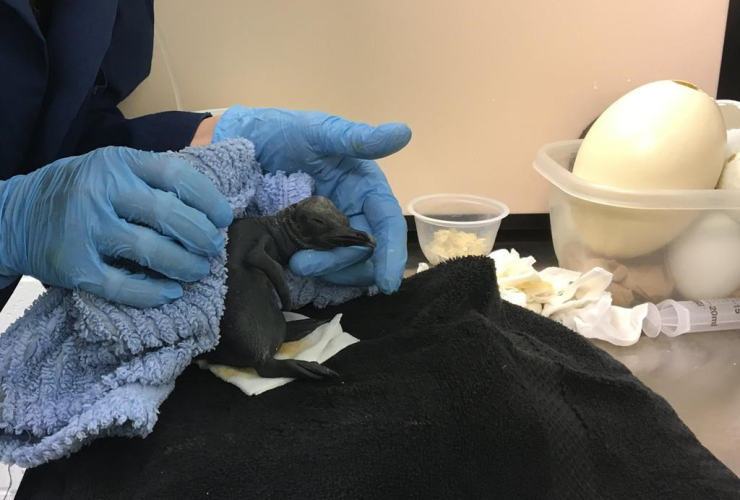Staff at the Calgary Zoo have adopted an extraordinary measure in an effort to ensure a pregnant giraffe becomes a mother for the first time.
Emara, a Masai giraffe, is expecting for the fourth time, but her previous pregnancies ended in two miscarriages and the death of a third calf with severe birth defects.
Emara's fecal samples, collected after the calf died, indicated a decrease in her progesterone levels throughout her pregnancy.
The decline in the hormone is believed to have been the cause.
So when zoo staff discovered last year that Emara was pregnant again, a decision was made to give her progesterone supplements.
Zoo officials say there are no records of such treatment on a giraffe, although it has been successfully used on a rhinoceros.
Progesterone supplements are commonly provided to women, as well as domestic animals, with a history of miscarriage.
"Her zookeepers were devastated when Emara experienced two late- term miscarriages and, subsequently, a calf that died within 48 hours after birth in recent years," said Dr. Doug Whiteside, senior staff veterinarian for the zoo.
"Pregnancy issues is giraffes are rare so we have been working with specialists and zoos across North America to help Emara successfully become a mom."
Whiteside said Emara's hormone levels have been in a good range and staff are optimistic she'll have a healthy baby this time.
Emara's due date is in mid-October. The average gestation period of a giraffe is 15 months.
"As soon as we see signs that she's going into labour, then we'll actually move her into one of the back bedroom areas, so she can be on her own, away from the other giraffes so they don't disturb her."
Emara arrived at the Calgary Zoo in the summer of 2016 from the San Diego Zoo. (CTV Calgary)
This report by The Canadian Press was first published Sept. 26, 2019.
It is both insiring, and
It is both insiring, and dispiriting to read about the labour some zoos expend on their confined animals. IF, it is not too much of an exaggeration to say that zoo animals are enslaved for the amusement and perhaps a certain type of education of urbanized humanity, then it is also appropriate to note the heroic efforts some zoos make in the care and keeping of the animals they own.
What is dispiriting about the entire existence of Zoos, is that the results of captivity are too often, premature death, failure to thrive, to breed, to raise infants, and worst of all, the false information/understanding of the captive animals which should really be free to display the magnificence of their natural behaviour in the undestroyed habitats set aside for them. We cannot know if the Giraffe's pregnancy failures can be attributed to her captive life, but there is no dispute that many zoo animals are incapable of conceiving, carrying to term, or caring for the infants they might bear. That human intervention is necessary is prima facie, an indictment of captivity.
I am unpleseantly reminded of the irresponsibility displayed by a European Zoo in euthanizing a perfectly healthy, but "surplus to requirements" giraffe calf and then conducting a public "necropsy" on the corpse as an exercise in "education". Perhaps as justification for the wanton destruction of a healthy animal? One zoo goes to extraordinary lengths to ensure a live delivery of a calf (another zoo attraction?) while another zoo decides its calf is expendable. Each case is instructive in its own way of the human lack of respect or genuine concern for the lives and well being of wild animals.





Comments